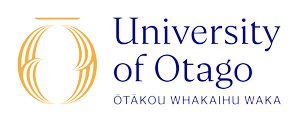Queensland Trauma Education (QTE): an innovative simulation program that addresses the needs and barriers of interprofessional trauma care education across a complex landscape
McLeod K, Owens L, Williamson F, Faulkner B, McLanders M. Queensland Trauma Education (QTE): an innovative simulation program that addresses the needs and barriers of interprofessional trauma care education across a complex landscape. Rural and Remote Health 2024; 24: 8851
2024-07-01Simulation-based education (SBE) has become a widely adopted means of undergraduate and postgraduate training of health professionals, which is particularly relevant for high-stakes, low frequency scenarios occurring in rural health settings. This article describes an inter-professional SBE training programme for Queensland clinicians, developed in response to inequitable provision of trauma services and a training needs analysis of local clinicians. This internal evaluation presents findings regarding the reach, effectiveness, broader adoption, implementation as intended, and maintenance of the programme, which are helpful to those planning and providing similar trauma and other rural SBE programmes in New Zealand, such as the Rural Interprofessional Simulation Course that is run in the Rural Health Academic Centre, Ashburton by the Rural Section – Department of GPRH, University of Otago.
Steve Withington
ABSTRACT:
Introduction: Effective trauma care requires the rapid management of injuries. Rural and remote areas face inequity in trauma care due to time, distance and resource constraints, and experience higher morbidity and mortality rates than urban settings. A training needs analysis (TNA) conducted with stakeholders across Queensland, Australia, revealed a lack of contextual, accessible and interprofessional trauma education for clinicians. The Clinical Skills Development Service and Jamieson Trauma Institute developed the Queensland Trauma Education (QTE) program to address these concerns. QTE comprises a face-to-face training course and open access to online training resources created and reviewed by trauma experts. QTE also supports local training through a statewide simulation network and free access to simulation training equipment. The aim of this article is to review the QTE program and assess the benefits to clinicians in both the delivery of education and the provision of trauma care.
Methods: To evaluate the QTE program, a desktop review was conducted. This included analyses of website data, course and website content, and facilitator, stakeholder, participant and user feedback. The data were evaluated using the RE-AIM (Reach, Effectiveness, Adoption, Implementation, and Maintenance) framework, and the program’s alignment with the original TNA outcomes was assessed.
Results: The results showed that QTE aligns with the identified training needs. Specifically, QTE provides trauma education that is relevant, sustainable, employs best practice, is locally delivered, provides continuous support, is multidisciplinary, multi-platformed, physically accessible and accredited by the Australasian College for Emergency Medicine. The review also highlights how QTE has effectively been reaching its target population, improves knowledge and skills, has become widely adopted, and been implemented and maintained with relative success.
Conclusion: The innovative QTE program addresses the previous deficits in trauma education and meets the needs identified in the TNA. The review also reveals further opportunities for continuous improvement and program sustainability.
